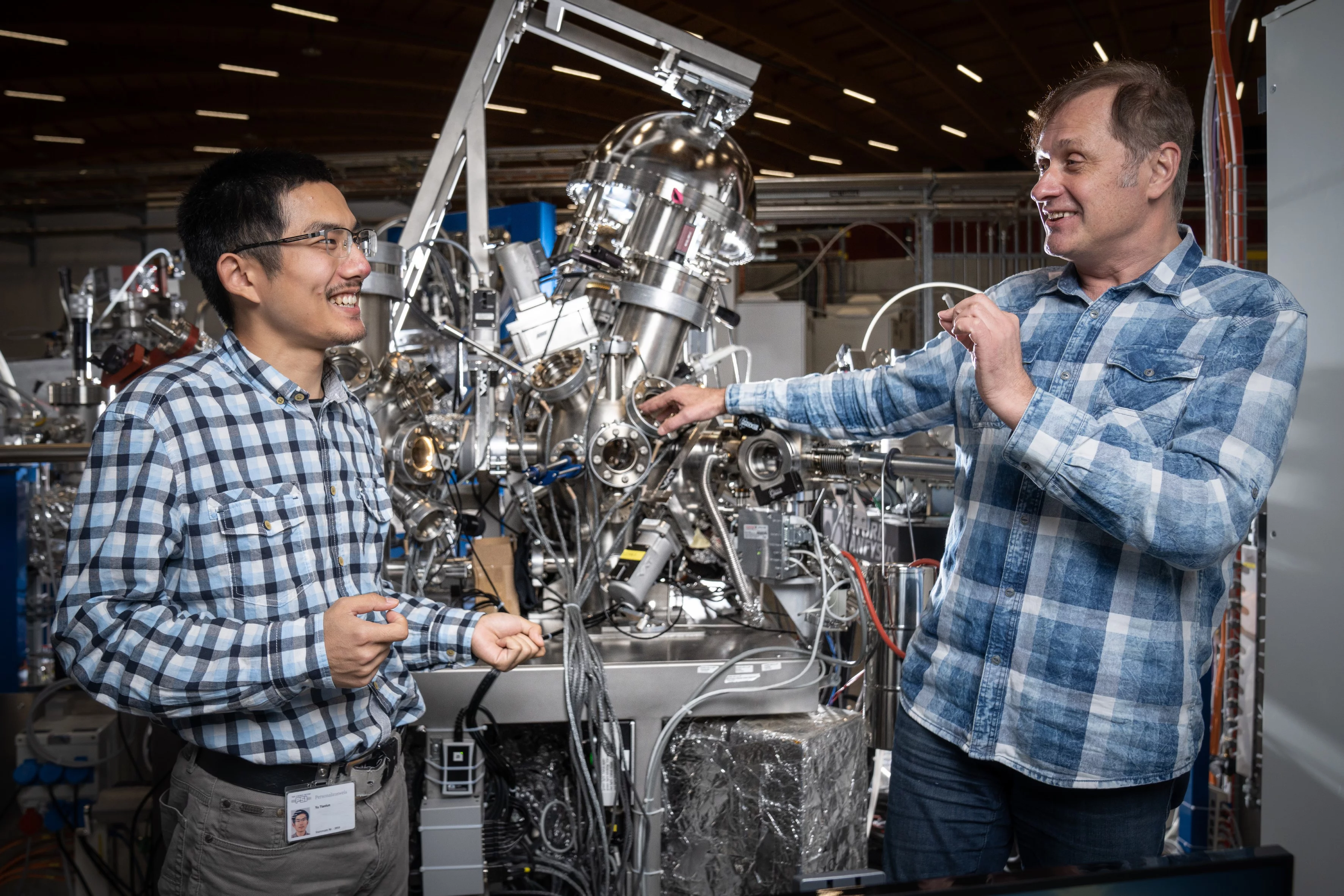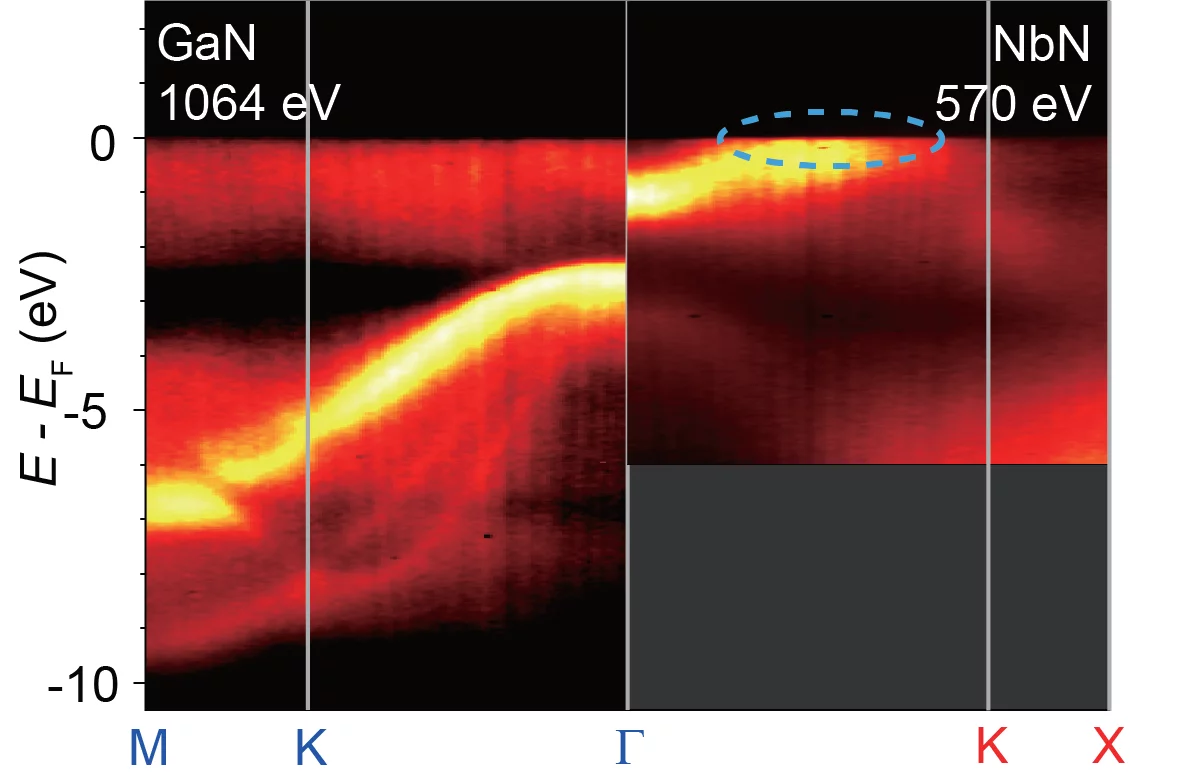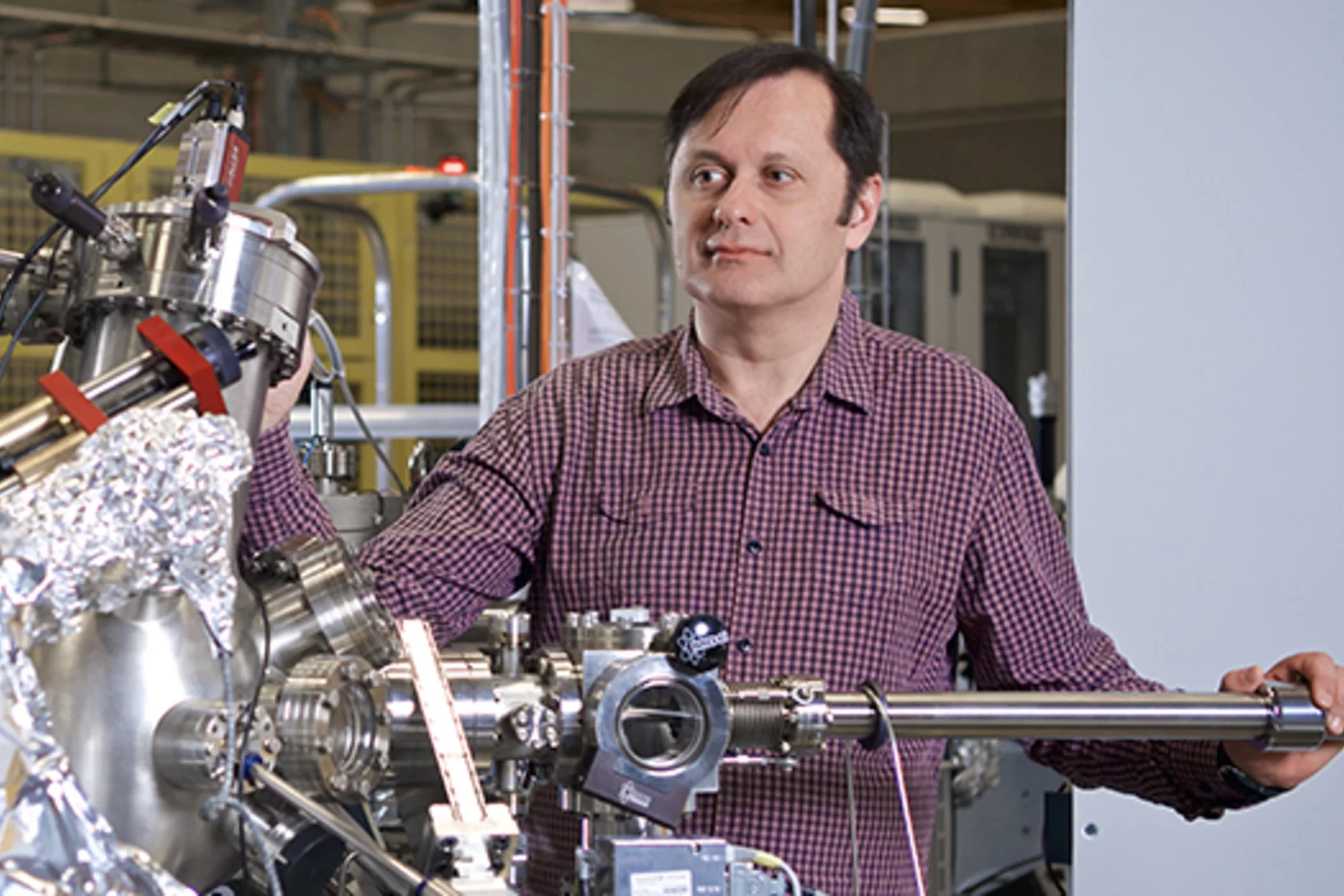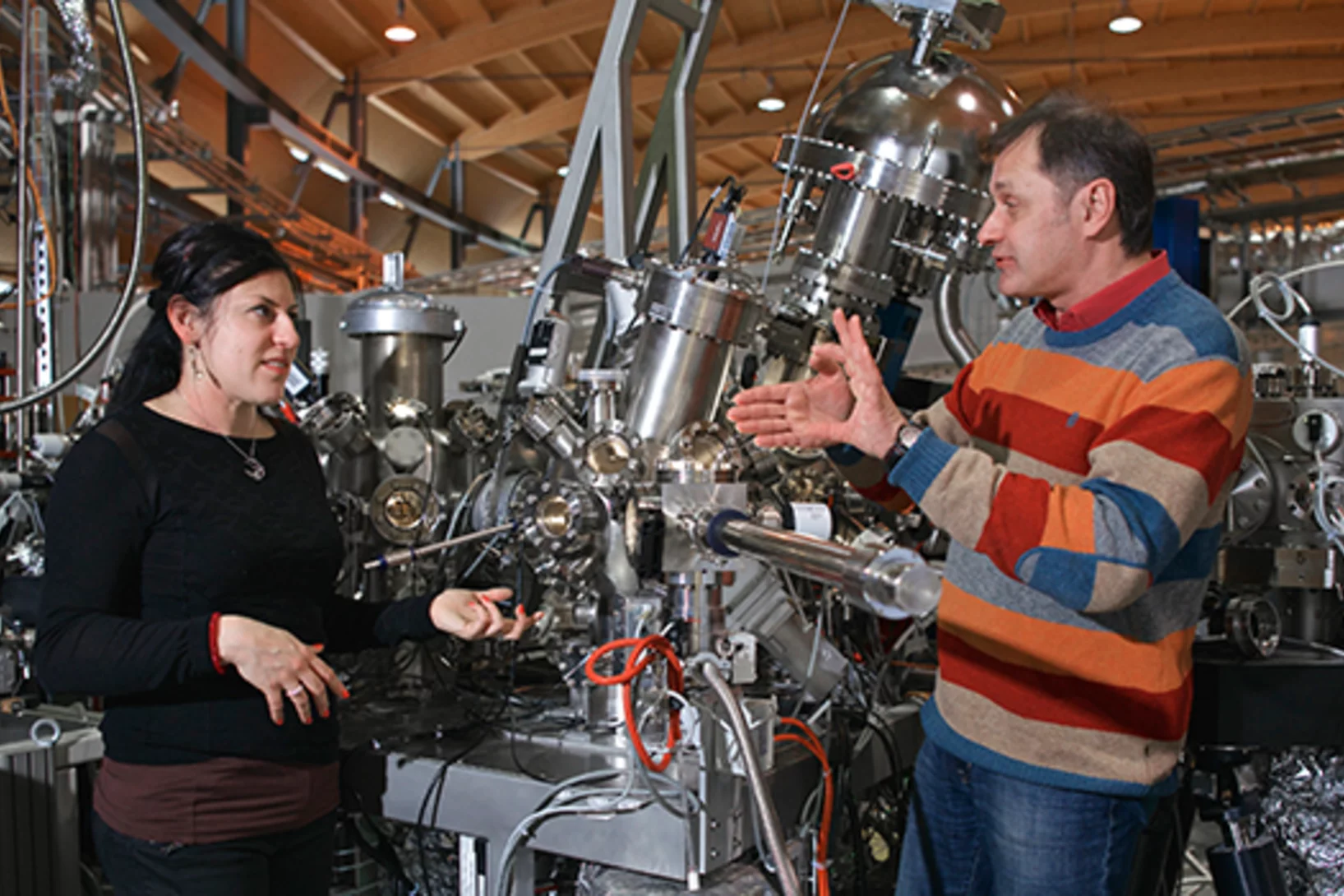Quantum effects in superconductors could give semiconductor technology a new twist. Researchers at the Paul Scherrer Institute PSI and Cornell University in New York State have identified a composite material that could integrate quantum devices into semiconductor technology, making electronic components significantly more powerful. They publish their findings today in the journal Science Advances.
Our current electronic infrastructure is based primarily on semiconductors. This class of materials emerged around the middle of the 20th century and has been improving ever since. Currently, the most important challenges in semiconductor electronics include further improvements that would increase the bandwidth of data transmission, energy efficiency and information security. Exploiting quantum effects is likely to be a breakthrough.
Quantum effects that can occur in superconducting materials are particularly worthy of consideration. Superconductors are materials in which the electrical resistance disappears when they are cooled below a certain temperature. The fact that quantum effects in superconductors can be utilised has already been demonstrated in first quantum computers.
To find possible successors for today's semiconductor electronics, some researchers – including a group at Cornell University – are investigating so-called heterojunctions, i.e. structures made of two different types of materials. More specifically, they are looking at layered systems of superconducting and semiconducting materials. "It has been known for some time that you have to select materials with very similar crystal structures for this, so that there is no tension in the crystal lattice at the contact surface," explains John Wright, who produced the heterojunctions for the new study at Cornell University.
Two suitable materials in this respect are the superconductor niobium nitride (NbN) and the semiconductor gallium nitride (GaN). The latter already plays an important role in semiconductor electronics and is therefore well researched. Until now, however, it was unclear exactly how the electrons behave at the contact interface of these two materials – and whether it is possible that the electrons from the semiconductor interfere with the superconductivity and thus obliterate the quantum effects.
"When I came across the research of the group at Cornell, I knew: here at PSI we can find the answer to this fundamental question with our spectroscopic methods at the ADRESS beamline," explains Vladimir Strocov, researcher at the Synchrotron Light Source SLS at PSI.
This is how the two groups came to collaborate. In their experiments, they eventually found that the electrons in both materials "keep to themselves". No unwanted interaction that could potentially spoil the quantum effects takes place.
Synchrotron light reveals the electronic structures
The PSI researchers used a method well-established at the ADRESS beamline of the SLS: angle-resolved photoelectron spectroscopy using soft X-rays – or SX-ARPES for short. "With this method, we can visualise the collective motion of the electrons in the material," explains Tianlun Yu, a postdoctoral researcher in Vladimir Strocov's team, who carried out the measurements on the NbN/GaN heterostructure. Together with Wright, Yu is the first author of the new publication.
The SX-ARPES method provides a kind of map whose spatial coordinates show the energy of the electrons in one direction and something like their velocity in the other; more precisely, their momentum. "In this representation, the electronic states show up as bright bands in the map," Yu explains. The crucial research result: at the material boundary between the niobium nitride NbN and the gallium nitride GaN, the respective "bands" are clearly separated from each other. This tells the researchers that the electrons remain in their original material and do not interact with the electrons in the neighbouring material.
"The most important conclusion for us is that the superconductivity in the niobium nitride remains undisturbed, even if this is placed atom by atom to match a layer of gallium nitride," says Vladimir Strocov. "With this, we were able to provide another piece of the puzzle that confirms: This layer system could actually lend itself to a new form of semiconductor electronics that embeds and exploits the quantum effects that happen in superconductors."
Contact
Original publication
-
Yu T, Wright J, Khalsa G, Pamuk B, Chang CS, Matveyev Y, et al.
Momentum-resolved electronic structure and band offsets in an epitaxial NbN/GaN superconductor/semiconductor heterojunction
Science Advances. 2021; 7(52): eabi5833 (8 pp.). https://doi.org/10.1126/sciadv.abi5833
DORA PSI
More articles on this topic
About PSI
The Paul Scherrer Institute PSI develops, builds and operates large, complex research facilities and makes them available to the national and international research community. The institute's own key research priorities are in the fields of future technologies, energy and climate, health innovation and fundamentals of nature. PSI is committed to the training of future generations. Therefore about one quarter of our staff are post-docs, post-graduates or apprentices. Altogether PSI employs 2300 people, thus being the largest research institute in Switzerland. The annual budget amounts to approximately CHF 450 million. PSI is part of the ETH Domain, with the other members being the two Swiss Federal Institutes of Technology, ETH Zurich and EPFL Lausanne, as well as Eawag (Swiss Federal Institute of Aquatic Science and Technology), Empa (Swiss Federal Laboratories for Materials Science and Technology) and WSL (Swiss Federal Institute for Forest, Snow and Landscape Research). (Last updated in June 2025)




